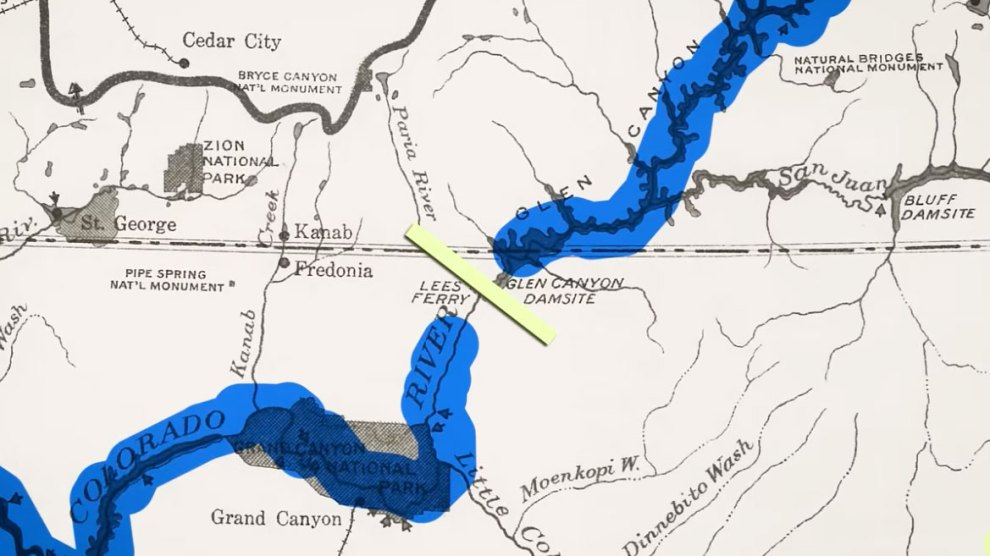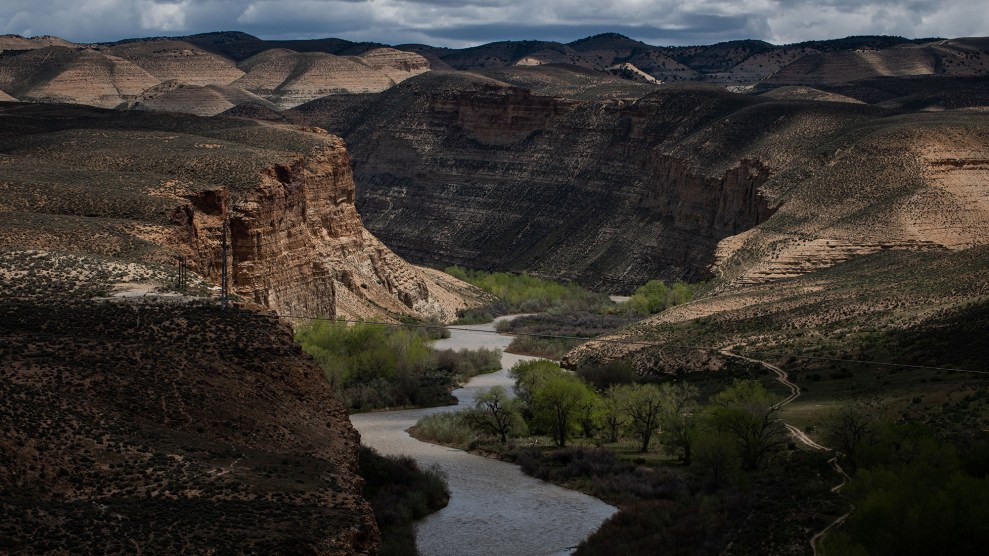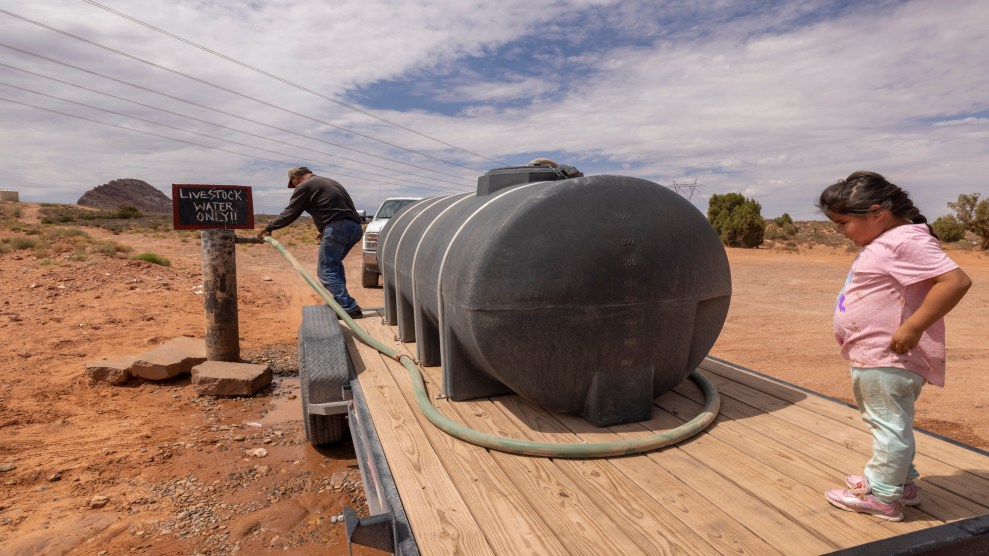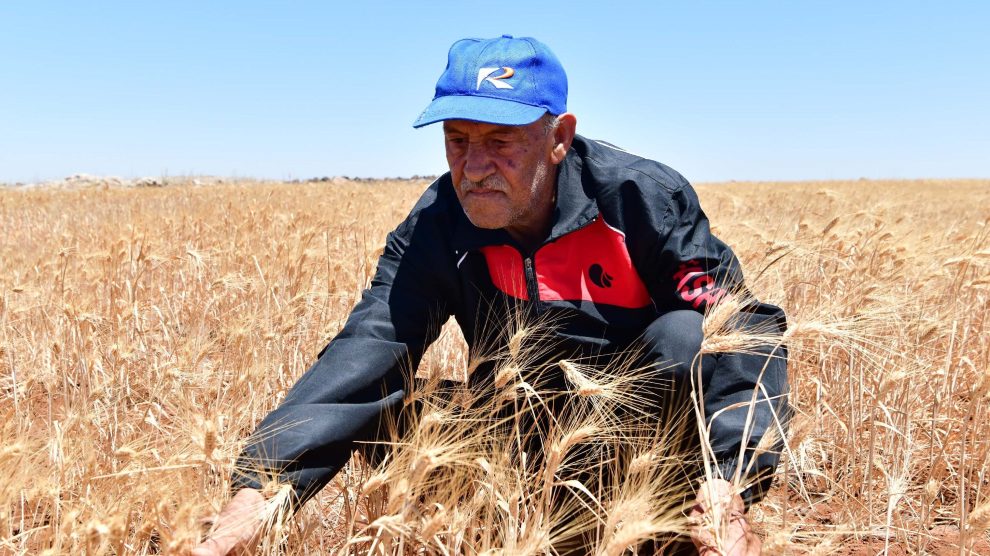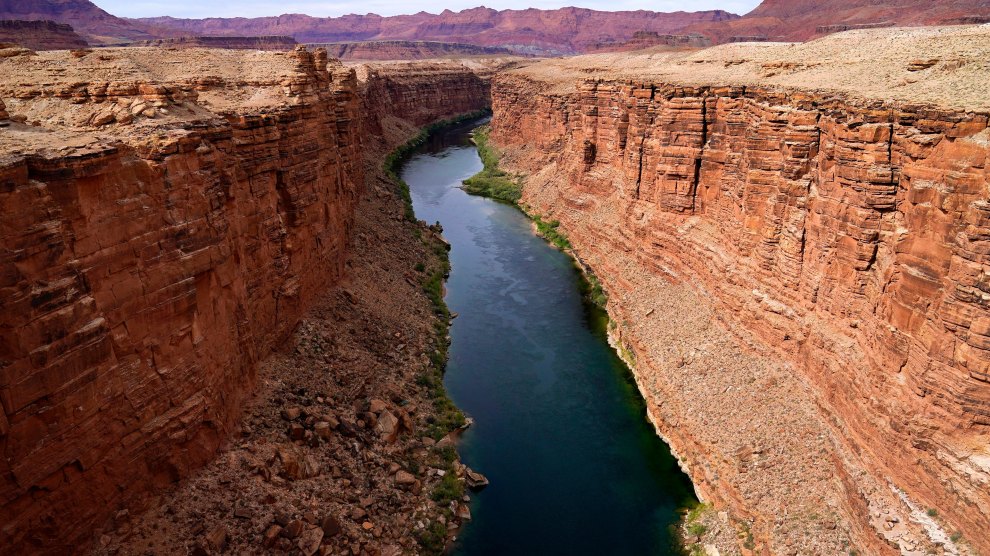
The Upper Basin of the Colorado River as seen from Lees Ferry, Arizona, May 29, 2021.Ross D. Franklin/AP
This story was originally published by Grist and is reproduced here as part of the Climate Desk collaboration.
After more than a year of intense negotiations, the states along the Colorado River have reached a deal to solve one of the most complex water crises in US history. The solution to this byzantine conundrum is deceptive in its simplicity: Pay farmers—who collectively use 80 percent of Colorado River deliveries—to give up their water.
Representatives from Arizona, Nevada, and California announced on Monday that they had agreed to reduce their states’ collective water usage by more than 3 million acre-feet over the next three years. That equals around a trillion gallons, or roughly 13 percent of the states’ total water usage. Under the terms of the deal, cities and irrigation districts in these so-called “Lower Basin” states will receive around $1.2 billion from the Biden administration’s Inflation Reduction Act, or IRA, in exchange for using less water. Most of the reductions are likely to come from farming operations.
Many had anticipated a more painful resolution to the crisis. Rather than taking mandatory cuts and losing out on billions of dollars from crop sales, irrigators in the southwest will get millions of dollars to reduce their water usage for just three years—and will cut their usage by less than half of what federal officials demanded last year.
This rosy outcome is only possible because of a wet winter that blanketed the river basin with snow and stabilized water levels in its two main reservoirs, Lake Powell and Lake Mead. Thanks to the ample runoff, the states could lower their target enough that the federal government could afford to compensate them for almost all of it.
This deal also resolves a key dispute between Arizona and California, the two largest water users on the river, which have clashed over how to respond to the water shortage. California has argued that Arizona should take the most cuts as the most junior user on the river, while Arizona argued that the cuts should be spread more evenly between all the states. The disagreement caused negotiations to drag out for months, and it’s only thanks to the payout from the federal government that they reached an accord.
These compensated cuts are larger than anything the river states have ever implemented before, but they are temporary, a Band-Aid for a crisis that is not going away any time soon. When the three-year agreement expires in 2026, the states will have to come back to the table again and address the elephant in the room: If water use is growing, and the river’s size is shrinking, some people are going to have to make do with less—not temporarily, but for good.
“This is a step in the right direction but a temporary solution,” said Dave White, a professor at Arizona State University who studies sustainability policy. “This deal does not address the long-term water sustainability challenges in the region.”
The basic blueprint of the deal is not new. Federal and state agencies in the Colorado River basin have tried to pay farmers to use less water before, but they have had difficulty scaling up these compensation measures. That’s in part because many farmers view the measures as an affront to their industry, even when they’re compensated. When a group of states in the river’s Upper Basin relaunched a dormant conservation program earlier this year, offering farmers money to leave their fields unplanted, just 88 water users across four states ended up participating.
The other issue is that conserving water is expensive. In order to convince farmers to plant fewer acres, officials need to give them more money per acre-foot of water than they would have made from selling crops on a given field. In California’s Imperial Valley, the “salad bowl” region that grows almost all the nation’s winter vegetables, irrigation officials have paid growers to invest in technology that makes their farms more efficient. But farmers in the valley have balked at the idea of taking money to leave their fields unplanted, especially as vegetable prices have remained high.
“Water is a valuable asset, and I think people are nervous about parting with it, because it kind of suggests that you don’t really need it after all,” said George Frisvold, an extension specialist at the University of Arizona who studies agricultural policy. “I think there’s real concern that this is voluntary now, but it could come back and bite you.”
The Biden administration has resolved those issues for the moment by offering a very generous price for conservation under the new deal. The compensation arrangement in the new deal works out to about $521 an acre-foot on average—three times the price in the Upper Basin pilot program and almost twice the conservation rate in the Imperial Valley’s program.
Frisvold says these payments will be hard to maintain over the long term. “We have a bunch of IRA money to pay for this right now,” he told Grist. “But is this going to be an ongoing thing? It’s kind of up in the air.”
Until recently, these experimental conservation programs were just that—experiments. But over the past two years, as a once-in-a-millennium drought has all but emptied out the river’s two main reservoirs, the river states have scrambled to cut their water usage and stop draining the river. It is all but impossible to do that without using less water for agriculture.
The Biden administration kicked off the scramble last summer by delivering an ultimatum to the river states. While testifying before Congress in June, a senior official from the US Bureau of Reclamation ordered the states to cut their water consumption by between 2 and 4 million acre-feet, or as much as a third of the river’s normal annual flow. The administration threatened to impose unilateral water cuts if the states couldn’t reach a deal on their own.
The states tangled for months over who should shoulder the burden of reducing water usage. The so-called Upper Basin states of Colorado, Utah, Wyoming, and New Mexico pointed the finger at Arizona and California, which together consume the majority of the river’s water. Meanwhile, representatives from California insisted that legal precedent shields the Golden State from taking cuts and that Arizona should bear the pain. (It isn’t clear whether the other four states on the river’s Upper Basin will make any corresponding reductions.)
In the end it was a very wet winter rather than a diplomatic breakthrough that helped ease tension between the states. Thanks to historic snowpack in the Rocky Mountains, it’s likely that water levels at Lake Powell and Lake Mead will stabilize this summer, even if just for a few months. This plentiful runoff has made the worst-case outcomes for the river much less likely and has given the states some breathing room to negotiate smaller cuts.
The new target was just small enough to make voluntary conservation feasible with the money from the Inflation Reduction Act: In the final hours of the debate over the bill last year, Senator Kyrsten Sinema of Arizona negotiated a $4 billion tranche of funding for “drought response.” That money will anchor the deal for the next three years, but it’s unclear whether payments will continue after that.
The big question now is what happens at the end of 2026, when the conservation deal will expire and when states and tribes will gather to negotiate the river’s long-term future. At that point, the river’s water users will once again debate the big questions that this deal has allowed them to punt on: How much water use can a shrinking river support? Who should use less water to account for the river’s decline? How can the government make whole the tribal nations that still don’t have their water?
Even amid the relief surrounding Monday’s deal, some water officials were already looking ahead. “This proposal protects the system in the short term so we can dedicate our energy and resources to a longer-term solution,” said Brenda Burman, the manager of the Central Arizona Project water authority, which delivers water to Phoenix and Tucson, in a press release. “There’s a lot to do and it’s time to focus.”
